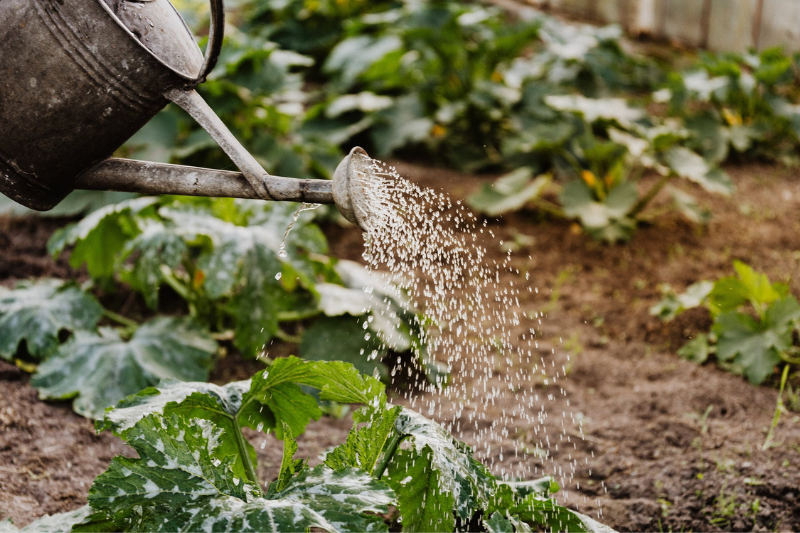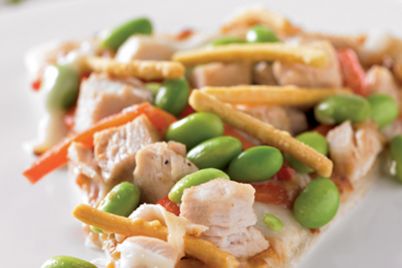Knowing how much to water depends on the type of plant, the growing status of the plant (seedling, mature, fruiting), the quality of the soil, climate (air temperature, sunshine, humidity, and wind), in-ground versus containers, and any number of other conditions.
Organic Gardening for Beginners
BY JOYCE WOODSON, Garden Enthusiast
It goes without saying that your vegetable garden needs water to survive. Believe it or not, the single most prevalent reason vegetables die is because of watering: too much or too little! Trust me; I have killed off my share of vegetables with kindness (overwatering) and neglect (under watering).
Confusing watering directions don’t help new gardeners, either. Gardening advice often recommends an inch of water weekly, but how is an inch of water measured in a garden bed? Does the same plant growing in a container need an inch of water, too?
Knowing how much to water depends on the type of plant, the growing status of the plant (seedling, mature, fruiting), the quality of the soil, climate (air temperature, sunshine, humidity, and wind), in-ground versus containers, and any number of other conditions.
The list of possible things impacting watering can feel overwhelming to a new gardener. Don’t despair! There may be some science involved, but watering is mostly common sense. You’ll get the hang of it.
To me, the type of plant is the most crucial watering consideration. Roots provide plants with oxygen, nutrients, and moisture, and some plants have a robust and deep root system while others are shallow.
For example, tomatoes have deeper roots while lettuce roots are shallow. A deeper root means greater access to moisture as water seeps through the soil. These plants need less frequent watering. Shallow rooted plants must contend with moisture loss due to evaporation from sun, heat, and wind on surface soil, so they must be watered more frequently.
Watering deeply once a week may work for deep roots but will not work very well for shallow roots. On the other hand, watering deeply rooted plants as frequently as shallow-rooted plants can create waterlogged roots that rot and kill the plant. It pays to know something about the plant’s root system.
Young seedlings have very fragile roots and are more susceptible to overwatering, especially if the soil easily compacts, and to under watering if the soil is loose and allows water to run right through it.
Mature plants have a more robust root system and can withstand occasional over or under-watering. Some plants will need more water (green beans) when they begin to fruit, while others require less water right before harvest (watermelon). Knowing your plant’s water requirements is critical to success.
Leaves are also part of the equation. Thick leafed plants like collards will not lose as much moisture through transpiration as thin leafed plants like squash. Transpiration is moisture loss through leaves, stems, and flowers. Sun and wind speed up moisture loss through transpiration, just like clothes drying on a clothesline. Keep in mind that all seedlings have thinner leaves and are subject to more significant moisture loss than mature plants.
Mulching helps maintain soil moisture, which will benefit shallow roots significantly. But, mulching too heavily can also block water from reaching roots if the mulch soaks it all up like a sponge. Thick mulch can also cause roots to reach up to the mulch instead of down into the ground, exposing them to drying out and insect damage.
Keep mulch near plants to about one inch. Garden paths and rows should have a thicker layer of mulch. HINT: when using mulch, be sure to watch out for slugs and snails that hide out in the mulch during the day and eat your vegetables all night.
Mulching is great, but it will not help poor soil, and lousy soil produces lousy results. In our area, we primarily have dirty sand called Myakka, and it does not hold water. Our sandy soil needs to be amended with organic matter like compost and worm castings to allow moisture retention and good drainage to grow vegetables.
Climate has a significant impact as well. Intense sun, heat, and wind will dry out the soil and leaves faster than cooler temperatures and less wind. We cannot change our climate, but planting vegetables in their proper season will help.
Finally, watering container-grown plants depends on the size of the container as well as the type of plant. Container soil tends to dry out faster than ground soil for two reasons:
- The pot and soil heat up and cause greater evaporation
- Potting soil mixtures are very loose and don’t retain moisture as well as garden soil
Sticking your finger into the top few inches of potting soil will work with shallow roots, but a moisture reader may be helpful for deeper root systems.
Watering is not rocket science, but as you can see, science is part of it. Knowing a vegetable’s moisture requirements and how the type of roots, soil quality, and climate can affect moisture is essential for gardening success.
And a successful garden is the point of gardening, isn’t it? We aren’t all digging holes for stress relief, are we? (I have heard gardening is cheaper than therapy, though.)
Gardening is more a journey than a destination, so I always advise new gardeners to start small. If you start with a small garden and learn the water requirements of only a few plants at a time, watering will quickly become second nature.
 Real estate agent Joyce Woodson loves gardening and sharing what she knows. The founder of “Straw Hat Gardening,” she has taught classes on basic organic gardening and provided garden consultations.
Real estate agent Joyce Woodson loves gardening and sharing what she knows. The founder of “Straw Hat Gardening,” she has taught classes on basic organic gardening and provided garden consultations.






